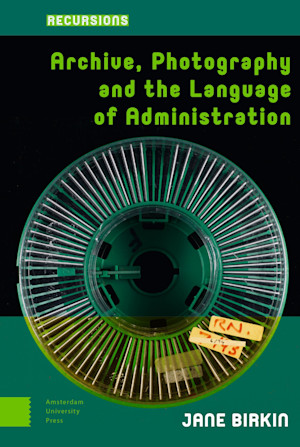Tags
NEW BOOK: Archive, Photography and the Language of Administration
Jane Birkin‘s new book, Archive, Photography and the Language of Administration (Amsterdam University Press, 2021), will almost certainly be of interest to readers of this blog.
Birkin writes in her introduction that she aims ‘to communicate the meaning of the archive through its operations, which I have observed on a day-to-day basis. At the same time, I want to reveal archive objects as more than memorials, as objects that remain with us in our contemporary milieu, ready and waiting to be put to use.’
Of particular interest is Birkin’s focus on questions of materiality:
‘The experience of working behind the scenes in a large university archive has not only brought an understanding of the importance of the catalogue and the hidden objects and storage systems that it parallels and describes, it has also led me to recognize the vast amounts of hidden labour that is involved in the keeping of archives. I am constantly struck by how something so physically static as an archive has so much human activity based around it. The researcher only sees the tip of the iceberg in terms of space and the objects, and the many people involved in maintaining both. With all this in mind, this book emphasises the material aspects of the archive: the physical space made up of shelves, boxes and files, and the situating of the single object within this controlled space, together with the systematic, performative, human practices of cataloguing and description that record and uphold both’.
Archive, Photography and the Language of Administration does not attempt to reveal what individual photographs might ‘mean’. Birkin writes that ‘instead of the ‘what’ they might mean, I focus here on the ‘how’ they might mean; in particular, how the archive catalogue, with its hierarchical system of ordered and juxtaposed descriptions that mirror the physical storage systems, might advance the understanding of the archive and the photographs within it. The catalogue is presented not as a simple finding aid, but as a compact tool for deep thinking around single images, image sets and the temporalities inherent in both’.
The full introduction can be downloaded here from the Amsterdam University Press site.

Table of contents:
Introduction
- The archivization of the image
- The social archive
- Catalogue, list, description
- The archiving camera
- Archival arts, performativity and poetics
- Afterword: the post-digital archive
Bibliography
